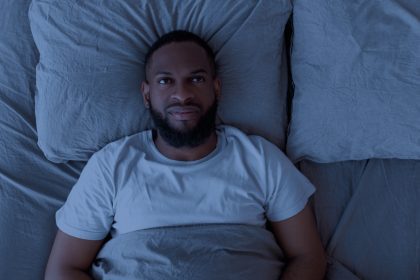The wellness industry overflows with supplements, superfoods, and exercise regimens promising transformative health benefits. Yet one of the most powerful interventions for modern ailments costs nothing and requires no special equipment or expertise. The simple act of stepping away from digital devices might hold the key to resolving health issues that expensive treatments have failed to address.
Modern life revolves around screens in ways previous generations could never imagine. The average person interacts with digital devices for over seven hours daily, creating unprecedented exposure to blue light, electromagnetic frequencies, and constant mental stimulation. This digital immersion has become so normalized that many people struggle to recognize how profoundly it affects their physical and mental wellbeing.
The human nervous system evolved over millennia to handle intermittent stressors and periods of genuine rest. Today’s digital environment creates a state of perpetual low-level activation that exhausts mental and physical resources. The brain remains in a hypervigilant state, processing endless streams of notifications, updates, and digital demands without the recovery periods necessary for optimal function.
Understanding digital detox as a wellness intervention requires recognizing technology’s impact extends far beyond obvious symptoms like eye strain or neck pain. The subtle but pervasive effects of constant connectivity influence sleep patterns, hormone production, cognitive function, and emotional regulation in ways that cascade through every aspect of health and vitality.
The hidden health costs of digital overload
Chronic screen exposure creates physiological changes that mirror those seen in other forms of addiction. The brain’s reward pathways become hijacked by the intermittent reinforcement schedule built into social media platforms, messaging apps, and digital entertainment. This neurochemical disruption affects dopamine regulation, making it increasingly difficult to find satisfaction in offline activities.
Sleep architecture suffers dramatically from evening screen use, particularly devices that emit blue light wavelengths. The circadian rhythm system interprets this artificial light as daylight, suppressing melatonin production and delaying the natural onset of sleepiness. Even when people eventually fall asleep, the quality of rest remains compromised for hours after digital exposure ends.
Attention fragmentation represents another significant cost of digital overload. The brain adapts to constant task-switching and interruption, losing its capacity for sustained focus and deep thinking. This cognitive fragmentation extends beyond work productivity into personal relationships, creative pursuits, and the ability to engage meaningfully with any single activity.
Stress hormone dysregulation occurs when the nervous system remains in a constant state of alert readiness. Cortisol and adrenaline levels stay elevated throughout the day, creating wear and tear on multiple body systems. This chronic activation contributes to inflammation, immune dysfunction, digestive issues, and cardiovascular strain that traditional medicine often treats as separate conditions.
Physical posture problems develop from prolonged device use, creating muscular imbalances that affect breathing, circulation, and spinal health. Forward head posture and rounded shoulders become structural adaptations that persist even when devices aren’t in use, contributing to headaches, fatigue, and reduced oxygen intake.
Recognizing digital dependency patterns
Most people underestimate their actual screen time and overestimate their ability to control digital consumption. Digital dependency manifests through subtle behavioral changes that gradually become normalized parts of daily routine. Recognizing these patterns represents the first step toward meaningful intervention.
Phantom vibration syndrome affects the majority of smartphone users, creating the sensation that devices are buzzing or ringing when they’re not. This phenomenon indicates how deeply the nervous system has adapted to expect constant digital stimulation, remaining hypervigilant for electronic communication even during quiet moments.
Anxiety symptoms often spike when devices are unavailable or when internet connectivity is lost. This response reveals psychological dependence that extends beyond convenience into genuine distress when digital access is restricted. The intensity of this anxiety correlates with the degree of digital integration into daily life.
Sleep disruption patterns frequently involve checking devices immediately upon waking or using screens as sleep aids. These behaviors indicate that digital consumption has become intertwined with fundamental biological processes, requiring conscious intervention to restore natural rhythms.
Attention span degradation becomes apparent when attempting to engage in activities that require sustained focus without digital distraction. Reading books, having extended conversations, or pursuing hobbies that demand patience become increasingly difficult as the brain adapts to rapid digital stimulation cycles.
Social interaction preferences begin favoring digital communication over face-to-face contact. When in-person gatherings feel awkward or overwhelming compared to online interactions, it suggests that digital engagement has partially replaced natural social skills and comfort.
The science behind digital wellness
Neuroplasticity research reveals that brains adapt to repeated experiences by strengthening neural pathways associated with those activities. Constant digital stimulation creates strong neural networks for rapid information processing while weakening pathways associated with contemplation, patience, and sustained attention.
Brainwave patterns shift in response to different types of digital content consumption. Passive scrolling through social media feeds produces different neurological states than active problem-solving or creative work on devices. Understanding these distinctions helps optimize digital engagement when complete avoidance isn’t practical.
Neurotransmitter balance becomes disrupted by excessive digital stimulation, particularly affecting dopamine and serotonin systems that regulate mood, motivation, and satisfaction. The artificial reward schedules built into digital platforms can overwhelm natural reward systems, making offline activities feel less engaging by comparison.
Electromagnetic field exposure from wireless devices creates measurable physiological responses in some individuals, including changes in heart rate variability, brain wave patterns, and cellular metabolism. While research continues to explore these effects, reducing exposure through digital detox provides a simple way to minimize potential risks.
Stress response patterns become conditioned to digital triggers like notification sounds, email alerts, and message indicators. These auditory and visual cues can activate fight-or-flight responses even when the actual content is benign, creating cumulative stress that affects overall health and wellbeing.
Designing your digital detox strategy
Effective digital detox strategies recognize that complete technology avoidance is neither practical nor necessary for most people. The goal involves creating intentional boundaries and recovery periods that allow natural healing and rebalancing to occur while maintaining necessary digital functionality.
Time-based boundaries establish specific periods when devices remain off-limits, such as the first hour after waking or the last hour before sleep. These bookend approaches protect crucial transition periods when the nervous system naturally shifts between different states of activation and rest.
Space-based boundaries designate certain areas as device-free zones, particularly bedrooms and dining areas. Physical separation creates environmental cues that support behavioral changes while protecting spaces associated with rest, intimacy, and meaningful connection.
Content-based boundaries involve curating digital consumption to eliminate sources of unnecessary stimulation or negative emotional activation. This might include unfollowing social media accounts that trigger comparison or anxiety, unsubscribing from email lists that create pressure, or removing news apps that generate chronic worry.
Replacement activities provide positive alternatives to digital entertainment and distraction. Having engaging offline options readily available prevents the vacuum that can lead to unconscious device reaching when boredom or restlessness arise.
Gradual reduction approaches work better than dramatic elimination for most people. Starting with short detox periods and gradually extending them allows the nervous system to adapt without creating rebound effects or overwhelming cravings for digital stimulation.
Physical recovery during digital breaks
The body begins healing from digital overload within hours of reduced exposure. Understanding these recovery phases helps maintain motivation during challenging adjustment periods when withdrawal-like symptoms might occur.
Eye strain relief happens relatively quickly once screen exposure decreases. The muscles that control focus and eye movement begin relaxing, reducing headaches and visual fatigue. Blinking patterns normalize, improving natural tear production and eye moisture.
Posture improvements require more time but begin within days of reduced device use. Neck and shoulder muscles start releasing chronic tension patterns, while improved awareness of body position develops when attention isn’t constantly directed toward screens.
Sleep quality enhancements often appear within the first week of evening digital restrictions. Melatonin production normalizes, sleep onset becomes easier, and deep sleep phases become more restorative. Many people report feeling more refreshed upon waking even with the same amount of sleep.
Nervous system regulation improvements manifest as reduced anxiety, better emotional stability, and increased resilience to daily stressors. The parasympathetic nervous system regains its natural balance, supporting digestion, immune function, and cellular repair processes.
Cognitive clarity increases as attention fragmentation decreases. The ability to focus on single tasks improves, creative thinking becomes more accessible, and decision-making feels less overwhelming. Mental energy that was constantly diverted to digital processing becomes available for other activities.
Mental and emotional benefits
Digital detox creates space for emotional processing that constant digital distraction often interrupts. Without the ability to immediately escape uncomfortable feelings through screen-based entertainment, people develop greater emotional resilience and self-awareness.
Anxiety levels frequently decrease as the nervous system stops responding to constant digital stimulation. The reduction in information overload allows mental resources to focus on immediate, actionable concerns rather than abstract worries generated by news cycles and social media comparison.
Attention span recovery happens gradually but can be dramatic. The ability to read books, have extended conversations, and engage in complex projects returns as the brain readjusts to sustained focus rather than rapid task-switching.
Creative expression often flourishes during digital breaks as mental space opens for imagination and original thinking. Without constant input of external content, internal creative resources become more accessible and valued.
Relationship quality improves when digital devices stop competing for attention during social interactions. Face-to-face conversations become richer, and emotional connections deepen when full presence becomes possible again.
Self-confidence grows as people rediscover their ability to be alone with their thoughts and feelings without needing constant external validation or distraction. This internal stability reduces dependence on digital feedback loops for emotional regulation.
Building sustainable digital habits
Long-term success with digital wellness requires developing sustainable practices rather than viewing detox as a temporary intervention. Creating new habits that support ongoing digital balance prevents regression while maintaining the benefits of periodic digital breaks.
Mindful engagement involves bringing conscious awareness to all digital interactions. Before picking up a device, pausing to identify the specific purpose and setting intentions for the session helps prevent mindless scrolling and overconsumption.
Regular detox scheduling builds periodic digital breaks into routine rather than waiting for crisis points or overwhelming symptoms. Weekly mini-detoxes or monthly longer breaks maintain the benefits while preventing accumulated digital stress.
Environmental design supports healthy digital habits by making offline activities more accessible and appealing while creating friction around unconscious device use. This might involve charging phones outside the bedroom or keeping books in easily accessible locations.
Social support systems help maintain digital boundaries when peer pressure or work demands challenge personal limits. Finding communities or individuals who share digital wellness values provides accountability and encouragement during difficult transitions.
Technology tools can paradoxically support digital wellness when used intentionally. Apps that track screen time, block distracting websites, or send reminders for digital breaks can provide structure during the transition to healthier habits.
Integration with other wellness practices
Digital detox amplifies the benefits of other wellness interventions by removing barriers to their effectiveness. Meditation becomes easier when the mind isn’t constantly activated by digital stimulation. Exercise feels more enjoyable when attention can focus fully on physical sensations rather than splitting between movement and device monitoring.
Nutrition awareness improves when meals aren’t consumed while scrolling through feeds or watching screens. Mindful eating becomes possible, supporting better digestion and satisfaction with food choices.
Sleep hygiene practices work more effectively when digital stimulation doesn’t counteract other sleep-supporting activities. Evening routines become more calming, and bedroom environments can truly support rest rather than serving dual purposes as entertainment centers.
Stress management techniques have greater impact when the sources of chronic digital stress are addressed. Breathing exercises, progressive muscle relaxation, and other calming practices work better when the nervous system isn’t constantly activated by electronic stimulation.
Social wellness improves as digital detox creates space for meaningful offline relationships and community engagement. Investment in local relationships and activities increases when digital alternatives don’t provide constant escape options.
The path to digital wellness isn’t about rejecting technology entirely but rather reclaiming conscious choice about when and how digital tools serve authentic human needs. In a world where constant connectivity has become the default, stepping back periodically might indeed be the forgotten key that unlocks previously elusive health and happiness.

















